originally posted at https://canmom.tumblr.com/post/730639...
Hi everyone! It’s that time of the week again~
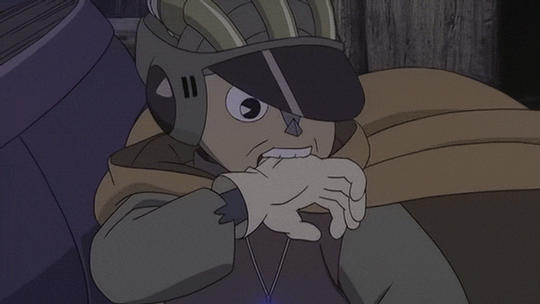
The day that puppets bite their gloves off.
Tonight on Animation Night we’ll be taking a look at the works of Takashi Nakamura (中村 たかし).
Nakamura is a director who flies under the radar a bit over here, but for those who know him, he’s a unique director - one who we’ve actually encountered a couple of times before, actually! He directed one of my favourite shorts in Robot Carnival [Animation Night 158] Chicken Man and Red Neck, in which the machinery of a city comes alive to have a violently strange Bosch-like party led by a strange red-robed robot, witnessed only by one salaryman on a moped…
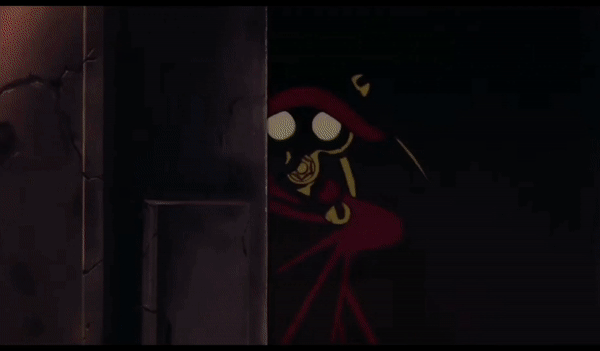
…and if you remember when we looked into the three adaptations of Project Itoh’s novels [Animation Night 127], he co-directed Harmony with Michael Arias, a powerfully understated film about a high tech biopower future and people who reject its utopia through a suicide pact. We also saw him in the Japan Animator Expo, with the charming Bubu & Bubulina…
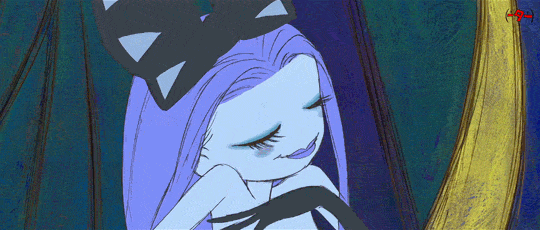
But let’s give a fuller story…
As an animator, Nakamura entered the industry very young, signing on as a colourist and inbetweener at Tatsunoko in 1974 - at which point he was only 16, an aspiring mangaka newly arrived in Tokyo. Working in Tatsunoko’s distinctive ‘industry within an industry’, he was introduced to Hirokazu Ishino’s 'Anidō’ association, in which he was introduced to not just many important animators but also had the chance to see animation from around the world, from Norm McLaren to Japanese independent animators like Kenzō Masaoka. The two films that got him most excited were Takahata’s Horus, Prince of the Sun [AN41] and Disney’s Fantasia [AN15], both of which contained incredible flexes of effects animation.
(Incidentally, it makes me happy that a lot of the films Watzky mentions showing at Anidō showed up on here! Following in the footsteps of giants and all that.)
Once Nakamura got the animation bug he put aside his manga aspirations and became a key animator, going freelance a couple years later. In 1979 he saw Galaxy Express 999, and got to witness the insane 'liquid fire’ effects of Kanada, and he instantly became a devotee - soon enough getting a chance to work with Kanada directly.
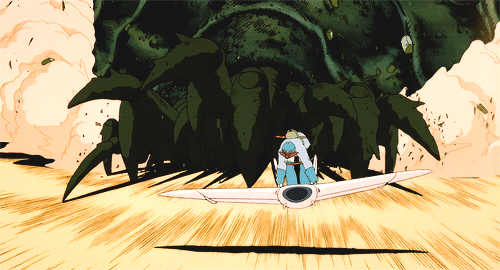
And by the early 80s Nakamura was definitely making a name, already working in animation direction and solo-animating entire episodes of Gold Lightan for Tatsunoko. The next couple of years he’d end up working on Nausicaa, Macross DYRL and the with Rintaro [AN53, 134] on Genma Taisen. By now he was specialising hard in effects (not unlike Anno!), and his work had become terrifyingly elaborate, look at this building collapsing into every single element or the clothes coming to the life under the power of a psychic. His work also inspired another incredibly significant animator to enter the industry - Kōji Morimoto, future cofounder of Studio 4°C - and they ended up working together on Genma Taisen.
Meanwhile on Nausicaa, Morimoto handled some of its most memorable scenes like the opening sequence where Nausicaa is pursued by the giant Ohmu. Once again you see his fascination with effects and debris, like the shot where the Ohmu explodes out of the forest, sending stalks flying in every directions. In Macross DYRL he animated the scenes of the gravity flipping sideways and a street’s worth of stuff tumbling down all at once, elaborating on a scene by Itano from the TV show.
In short, if there’s lots of bits of stuff flying around in a mid-80s movie, there’s a good chance that Nakamura was involved somehow.
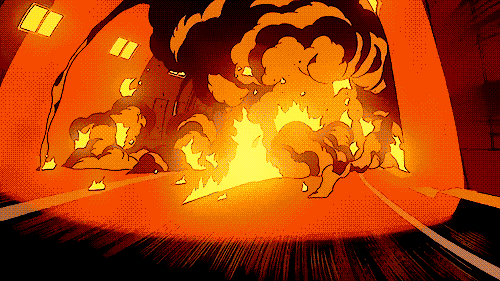
Such a focus made him a perfect fit for the 'realist school’ developing in the late 80s - whyat you might loosely call the Otomo circle. You see his work on both Manie-Manie/Neo Tokyo and Robot Carnival, and naturally enough he ended up part of the team for Akira. Given what he’d already accomplished, could he somehow step it up another notch? You bet.
Going by sakugabooru comments, Nakamura’s role in Akira was mainly related to two things: explosions, and animation direction. Considering how iconic the explosions in Akira are, and how challenging it was to animate Otomo’s very solid and 3D designs… the success of the film depended a lot on Nakamura’s insane drawing skills. Further, he was a kind of 'teacher’ to the rest of the staff, such as Morimoto. But this was apparently the 'limit’ for Nakamura, and after Akira he turned from creating animation for others.
And this point marks a major stylistic turn in Nakamura’s work. Starting with the World Masterpiece Theatre adaptation of Peter Pan, on which he worked as character designer, he adopted a highly stripped-down, simplified style. With all the Akira goodwill, he was able to pull in many of the new stars of the 'realist’ school, from Okiura to Ohira. But his work became a lot less flashy, focusing more on a Disney-like approach where it’s about creating a consistent sense of life rather than individual flashy sequences.
The Hakkenden [AN 122] was one of his first chances to experiment with the new style as a director, with Episode 4 really kicking off the series’ trend of completely redesigning the characters according to the sensibilities of each director. He also worked on the kinda obscure but gorgeous realist-school film Junkers Come Here [AN 118] as his own film debut, Catnapped!, progressed.

So Catnapped! This is a weird movie. Many people see a Disney influence in its style, and it definitely broke the 90s trend with a younger target audience - but Disney could never make a movie filled with as much imaginative strange shit as this one. Watzky points out how much Otomo influence there is in the direction - dense environments and elaborate multiplane shots, in contrast to simple character designs which afford a lot of movement. These designs allow great animators like Okiura [AN139] (who animated most of the finale) to really go to town. There’s a great para in Watzky’s article on the different directions taken by the 'realist’ animators.
Catnapped is a pretty short film at less that 80 minutes, a revel of visual imagination; Nakamura’s next film A Tree of Palme is just as distinctive but in a different direction. It’s another take on the Pinocchio story [c.f. AN138], but a very 'dark, metaphysical’ one, with its biggest inspirations apparently being French - Moebius and René Laloux [AN71, 93], with Mutsuo Koseki coming up with art direction capable of comparing to Laloux. The three year megaproject pulled in animator legends from across the board - Inoue, Ohashi, Ando, Masuo, Matsutake, Umetsu! (Count how many directed part of Robot Carnival).
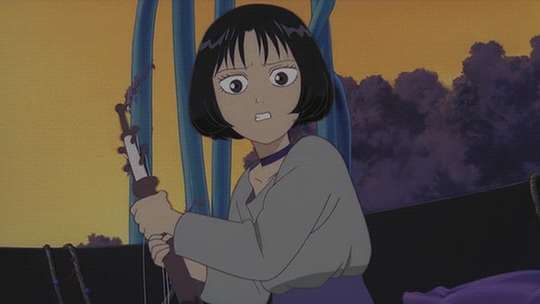
The character designs of Palme look simple in stills, but once you see them in motion, they’re anything but - incredibly volumetric and full of life and movement.
In the 2000s and 2010s, Nakamura ended up working with Colorido and 4C a lot (naturally enough given the connection with Morimoto!), increasingly making effective use of CG in his projects. This led up to The Portrait Studio (写真館 Shashinkan) (c.f. AniObsessive) in 2015 - an almost solo short film, with Nakamura writing, storyboarding, designing characters and doing all the key animation, which is a kind of slice through Japanese history through the lens of a photographer who just wants to figure out a way to get his client to smile.
Much like Palme, The Portrait Studio combines simple character designs (in a stylised picture-book look) with very precise, realist animation on 2s and 1s to lend them a sense of density and 'existence’. Moreover, unlike most anime, it uses the raw pencils as finished lines instead of redrawing them clean on a computer. The style might call to mind Otomo’s Cannon Fodder, and in fact the two films share a colour designer. 3D is integrated with an unusual degree of skill and subtlety. It makes for a fascinating combination, a very memorable and impactful film for all its apparent simplicity.
So, that’s our focus for tonight! We’ll be watching Catnapped!, A Tree of Palme and The Portrait Studio, and getting to find out what the deal is with Nakamura - one of the Very Important Guys in the history of anime, influential on so many of my faves… but all too often overlooked by people who aren’t like, huge animation nerds.
If that sounds fun, come join me at twitch.tv/canmom - going live in just a minute! I’ve been wanting to do Nakamura for ages, and today I finally found energy for a writeup. See you there~
Animation Night 174: A Tree of Palme
Hello everyone! I’m glad a lot of people seem to enjoying this brief writeup about Nakamura. Tonight, after two weeks of not screening A Tree of Palme when promised… tonight is finally the night!
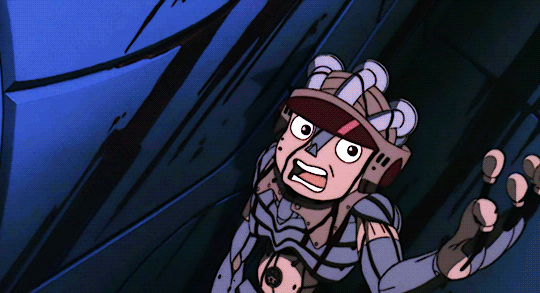
Since last time the ever-meticulous @roseillith seems to have watched this film and so I have a few more tasty gifs to get you interested~
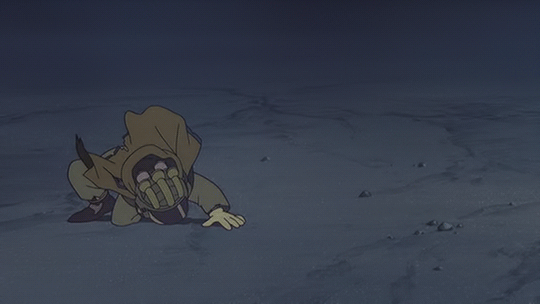
Evidently the animation in this movie is absolute top notch stuff - a determined holdout of cel animation in the digital era with the supervision of the legendary animator Toshiyuki Inoue lending the characters an astonishing degree of weight and form.
But what’s it about? Palme here is a puppet created to look after a woman Xian by her husband. After her death, Palme is left bereft of purpose - but he is visted by a mysterious woman resembling Xian who brings a request: a delivery to be made to the faraway land of Tama.
Palme sets out on this mission, but of course it won’t be that simple. He’s a Pinnochio-type character you see, a creature who experiences human emotions but does not yet understand them. And the world he’s about to traverse is a rather cruel one. Eventually Palme is offered a path to 'humanity’, but his arc of becoming a person is not so uplifting as Pinocchio’s, and his experiences render him cold, even cruel. It’s a story that seems to be kinda polarising, which just makes me all the more curious.
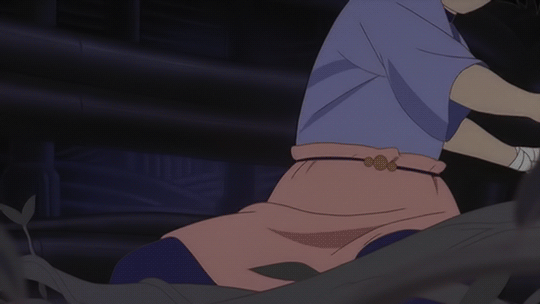
So let’s watch it at last! Animation Night 174 will go live at 21:30 UK time, and the movie will begin around 22:00, finishing shortly after midnight. The place will be as usual twitch.tv/canmom - would love to see you there!
Comments